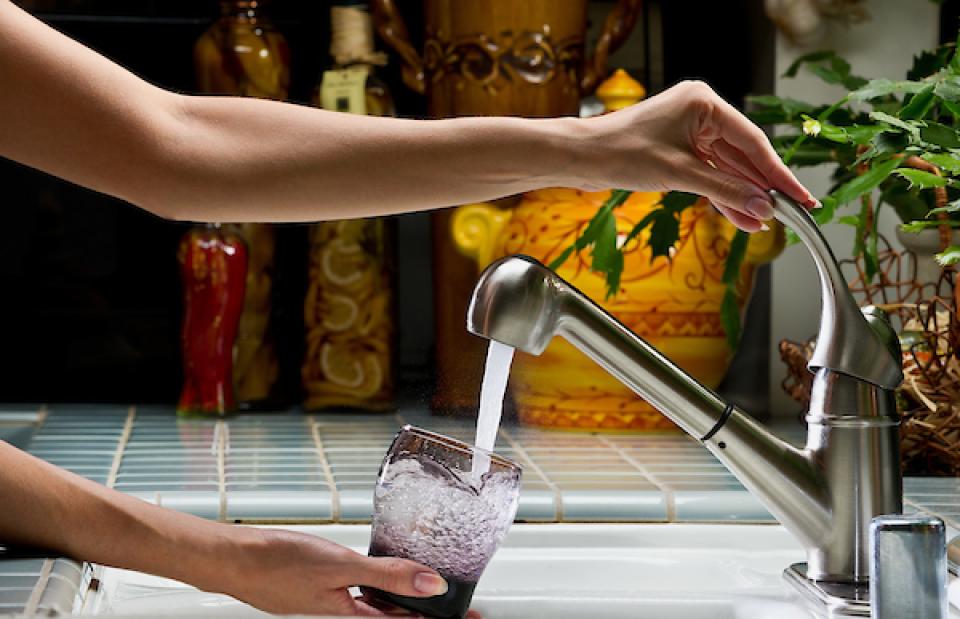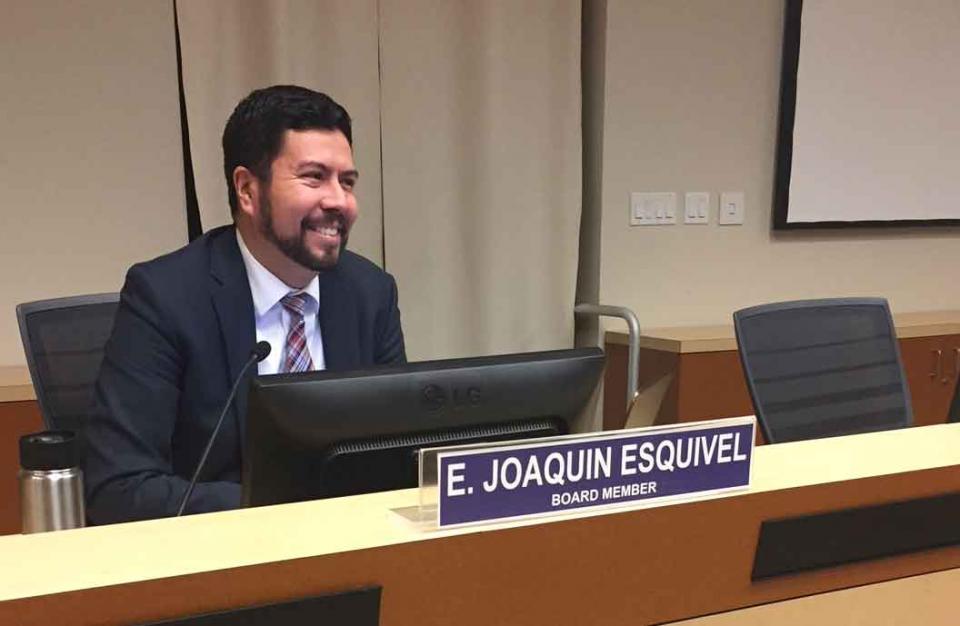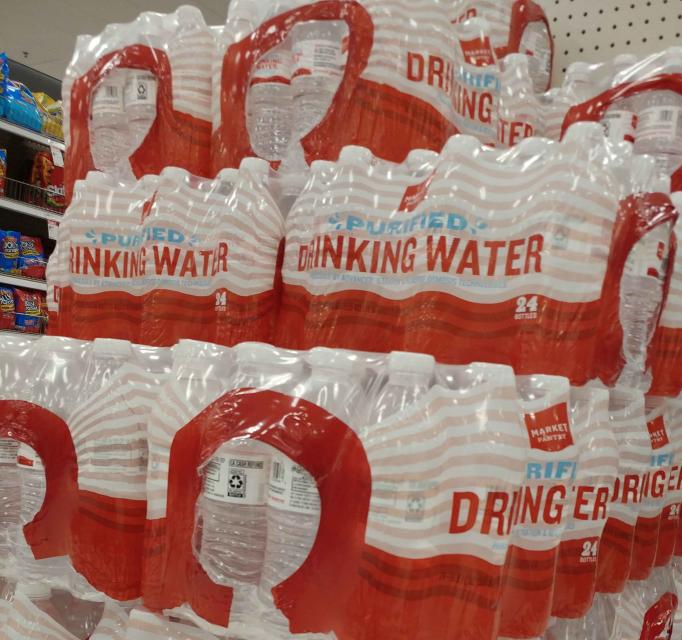California Officials Draft a $600M Plan To Help Low-Income Households Absorb Rising Water Bills
WESTERN WATER NOTEBOOK: State Water Board report proposes new taxes on personal and business income or fees on bottled water and booze to fund rate relief program
 Low-income Californians can get help with their phone bills, their natural gas bills and their electric bills. But there’s only limited help available when it comes to water bills.
Low-income Californians can get help with their phone bills, their natural gas bills and their electric bills. But there’s only limited help available when it comes to water bills.
That could change if the recommendations of a new report are implemented into law. Drafted by the State Water Resources Control Board, the report outlines the possible components of a program to assist low-income households facing rising water bills.
Different from Gov. Gavin Newsom’s water tax proposal to fix decaying water systems in poor communities, the proposal before the State Water Board is focused on providing water service rate relief for California residents struggling to make ends meet. It is modeled after existing programs that offer low-income assistance rates for electricity and gas service. The report to the board recommends funding the program through taxes or fees so as not to burden the people the program aims to help.
A 2015 survey examined average water rates by California county. See how they compare.
“Taxes on personal and business income would provide progressive revenues, while fees on bottled water or alcohol would have a nexus to water use,” the report said. The bottled water industry already has raised objections.
Max Gomberg, climate and conservation manager at the State Water Board, said the proposal would be the first statewide rate assistance program in the nation. “No other state does this. The federal government has never done anything like this.”
“Affordability is creeping up on us as an issue. As we see the need to replace infrastructure in our communities and make them more resilient to climate change, water bills are going to keep going up.”
~State Water Board member Joaquin Esquivel
The State Water Board’s report notes that the recommendations are couched within the state’s Human Right to Water law and that “multiple strategies” are needed to ensure everyone has access to clean and affordable drinking water.
Newsom in January called for a statewide water tax to create a Safe and Affordable Drinking Water Fund to pay for water system improvements for disadvantaged communities, calling it a “disgrace” that an estimated 1 million people in the state lack access to safe drinking water. The fund would be supported by fees imposed on water customers, fertilizer purchasers and dairy producers.
Rate Assistance: Low enrollment, limited support
The State Water Board noted in its proposal that community water systems serving 46 percent of the state’s population offer some form of rate assistance, though many programs have low enrollment and limited financial support. Proposition 218, approved by voters in 1996, limits charges by public water agencies to the cost of providing the service. Agencies that offer rate assistance fund the programs from non-fee revenues, the State Water Board said. (Investor-owned water utilities are regulated by the California Public Utilities Commission and are not subject to the limits of Prop. 218, but their customers would be included in the proposed rate relief program.)
The State Water Board looks to increase the number of low-income households that presently have access to water rate assistance (estimated at less than 20 percent) and to respond to a finding by the American Water Works Association that, adjusted for inflation, the average California household was paying about 45 percent more for water in 2015 than in 2007.
 “Affordability is creeping up on us as an issue,” said State Water Board member Joaquin Esquivel. “As we see the need to replace infrastructure in our communities and make them more resilient to climate change, water bills are going to keep going up … so we need to have a discussion of how we account for the need to maintain that water to be affordable.”
“Affordability is creeping up on us as an issue,” said State Water Board member Joaquin Esquivel. “As we see the need to replace infrastructure in our communities and make them more resilient to climate change, water bills are going to keep going up … so we need to have a discussion of how we account for the need to maintain that water to be affordable.”
Released in January, the draft report notes that the burden of rising drinking water bills falls most heavily on the 13 million people living in low-income households (about $50,000 annually for a family of four, under federal poverty guidelines). Some families, the report noted, may be prone to making “difficult and risky tradeoffs” to balance paying for housing, food and utilities.
“More and more Californians are struggling to access safe and clean water and we do need an approach that guarantees universal access to affordable drinking water,” said Jonathan Nelson, policy director with Community Water Center, a Visalia-based environmental justice organization.
He added, however, that a statewide low-income rate assistance program should be pursued as part of a plan to clean up contaminated drinking water sources and to ensure people are being served water at rates that are “affordable and transparent.”
“More and more Californians are struggling to access safe and clean water and we do need an approach that guarantees universal access to affordable drinking water.”
~Jonathan Nelson, policy director with Community Water Center, a Visalia-based environmental justice organization
The idea of a rate assistance program came from then-Assemblyman Bill Dodd’s (D-Napa) 2015 legislation that directed the State Water Board to submit recommendations for such a program. Dodd, now a senator, has submitted a placeholder bill and is working with the State Water Board to move the plan forward.
“It’s very expensive and I get that,” Dodd said. “We need to figure out what’s the very best way to provide resources to the most in need.”
Esquivel acknowledged that it does no good to help people afford water if that water is dirty. While he called it a “moral imperative” to ensure access to clean and safe water, he said there’s no reason for California not to also address affordability.
“Because we can walk and chew gum at the same time and are sophisticated enough in the state of California,” he said, “we are having the discussion around what a low-income assistance rate looks like.”
Structuring Aid: Rebates, Credits
The low-income assistance program would help eligible recipients through rebates or credits based on the average bill in a service area.
For bills under $90 a month, a household would get a 20 percent benefit, for bills between $90 and $120 the benefit would be 35 percent, and for bills over $120 a month, it would be 50 percent.
The mechanism for aiding eligible participants could be implemented through a credit on electric and gas bills, electronic benefit transfer cards or through income tax rebates.
“Basically, a lot of low-income households in the state live in multifamily housing but they don’t pay a water bill directly. They pay through their rent,” said Gomberg, with the State Water Board. “If you want to be able to reach them, you have to use a different benefit distribution system.”
“No other state does this. The federal government has never done anything like this.”
~Max Gomberg, climate and conservation manager at the State Water Resources Control Board
How to pay for the program, estimated to cost about $606 million in its first year, remains to be resolved. The State Water Board recommends new taxes or fees, but the exact details will be decided by the Legislature.
In a written statement, the Association of California Water Agencies noted that it “supports the overall goal of maintaining drinking water affordability” and that some of its members already have low-income assistance programs in place.
A statewide low-income assistance program should have an “effective, reasonable and efficient-to-implement” mechanism for generating money and distributing it. ACWA credits the water board’s draft for recognizing that revenue generation and benefit distribution via a local water bill “would be very problematic.” ACWA last year vigorously opposed a proposed water tax to help clean up drinking water in disadvantaged communities.
David Wolfe, legislative director with the Howard Jarvis Taxpayers Association, said the low-income rate assistance program should be funded through the state budget and not through new taxes when the state already has a $19 billion surplus.
In their comments to the State Water Board, the International Bottled Water Association and California Bottled Water Association noted that in some areas with unsafe tap water, where many of the intended rate assistance beneficiaries live, “bottled water may be the only safe and reliable water supply available.” Taxing bottled water may discourage consumption in those areas, the associations said.
 In contemplating the details of a rate assistance program, Nelson with Community Water Center said it is important to incorporate such variables as how it would work for natural disasters such as drought and fire and to recognize the challenges faced by the estimated 1 million people struggling to receive safe drinking water. Gomberg noted that it’s early in terms of the political process, but finding the means to fund a rate assistance program will take work. “We are talking about a program that would be $600 million a year,” he said. “To raise the revenue requires a supermajority in the Legislature and potentially a ballot measure, depending on the revenue source.”
In contemplating the details of a rate assistance program, Nelson with Community Water Center said it is important to incorporate such variables as how it would work for natural disasters such as drought and fire and to recognize the challenges faced by the estimated 1 million people struggling to receive safe drinking water. Gomberg noted that it’s early in terms of the political process, but finding the means to fund a rate assistance program will take work. “We are talking about a program that would be $600 million a year,” he said. “To raise the revenue requires a supermajority in the Legislature and potentially a ballot measure, depending on the revenue source.”
The Right to Clean, Affordable Water
Once the State Water Board’s plan is finalized, it moves to the Legislature for consideration. Esquivel said the template for creating the program exists through those in place for utility customers and that funding it “treads in the same territory” as the governor’s proposed water tax.
“I know there is a way to get the two things done together in a way that makes sense, with the priority being on access to clean and safe water,” he said.
Dodd, the senator from Napa, acknowledged the challenge of turning the State Water Board’s recommendations into law.
“Any time you have the need to fund that much, it will be a challenge,” he said. “We are going to have to remain flexible and perhaps do this over a period of years.”
Nelson with Community Water Center said getting clean, safe and affordable water to all of the state’s residents requires a concerted effort.
“Water is a basic human right … regardless of whether you own a home or are a renter, but it doesn’t magically happen for free, the same way that our education, our energy and our food doesn’t magically happen for free,” he said. “We have to put our money where our words are.”
Know someone else who wants to stay connected with water in the West? Encourage them to sign up for Western Water, and follow us on Facebook and Twitter.








